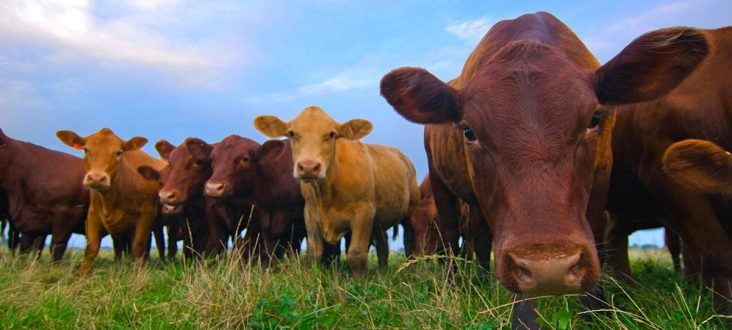Cattle and calf inventories drop in Arkansas; prices could lead to profits for cattle farmers in 2022
by February 15, 2022 11:45 am 1,617 views

Arkansas cattle inventories declined for the third straight year, falling more than 5% from January 2021 estimates. State cattle farmers liquidated about 90,000 cattle and calves, according to the January Cattle Inventory Report from the U.S. Department of Agriculture.
The state’s drop more than doubles that of the national cattle inventory, which is 2% less than January 2021 estimates. Arkansas typically ranks among the top 15 beef cattle producing states. There were nearly 1 million head of beef cattle/cows in the state in 2020, USDA reported.
James Mitchell, extension agricultural economist for the University of Arkansas System Division of Agriculture, said opinions vary throughout the agricultural industry, as far as whether the state is likely to see further liquidation of cattle holdings, or if a “levelling off” is at hand.
“USDA’s Cattle Inventory Report provides us with the most detailed data we will get all year on past and current cattle numbers in the United States and Arkansas,” Mitchell said. “Several estimates in the report are indicators for what to expect this year regarding supplies and prices.”
“Several people question whether we will observe a period of sharp liquidation or more of a flattening of cattle inventories for the current cattle cycle,” he said. “This year’s report confirms that we are experiencing a liquidation period, both in Arkansas and Nationally.”
Both beef cows and replacement heifers declined. Nationally, the beef cow herd fell 2.3%, which exceeded industry expectations. Heifers declined by 3.3% nationally. In Arkansas, beef cow herds declined 2%, but heifers fell by 5%.
“Slaughter totals support these estimates,” Mitchell said. “In 2021, beef cow slaughter averaged 9% higher year over year, implying an 11.5% culling rate—the highest cull rate since 2011. Heifer slaughter averaged 4% higher in 2021.”
Looking ahead, the 2021 calf crop augurs a tighter beef supply for production in 2022-2023. In Arkansas, the 2021 calf crop was 2.5% smaller, more than double the 1.2% decline seen nationally. Based on these estimates, Mitchell and other economists forecast 2.8% and 2.1% declines in 2022 and 2023 beef production.
“If the drought persists in the Southern Plains and cow and heifer slaughter remains high, we could see a slight upward revision in beef production forecasts,” Mitchell said.
But the typical industry indicators — beef cow liquidation, less heifer retention and a smaller calf crop — don’t explain Arkansas’ 90,000 head decline in cattle inventories, Mitchell added.
“The most significant contributor for Arkansas was the decline in feeder cattle supplies outside feedlots,” he said. “USDA does not report feeder cattle supplies in the Cattle Inventory Report. Instead, we calculate it from other categories.”
Mitchell said feeder cattle supplies are more accurately calculated by adding other heifers, steers weighing 500 pounds or more and calves weighing 500 pounds or less.
“Subtract cattle on feed inventory, and you have an estimate for feeder cattle supplies outside of feedlots,” he said. “In Arkansas, feeder cattle supplies declined 57,000 head or 9%. The decline in feeder cattle accounts for 63% of the total Arkansas cattle inventory decline.”
“Limited hay supplies and expensive feed probably limited winter feeding opportunities for some producers,” Mitchell said. “Add strong fourth-quarter feeder cattle prices in Arkansas — together, these factors led to producers selling some feeder cattle this fall that they would have otherwise held through the winter.”
Mitchell described the overall tone of the Cattle Inventory Report as “bullish.”
“In Arkansas, a smaller 2021 calf crop and tighter feeder cattle supplies will support feeder cattle prices this spring and beyond,” he said. “We have the prices to be profitable this year. Forage availability and input costs will be critical factors to manage.”
